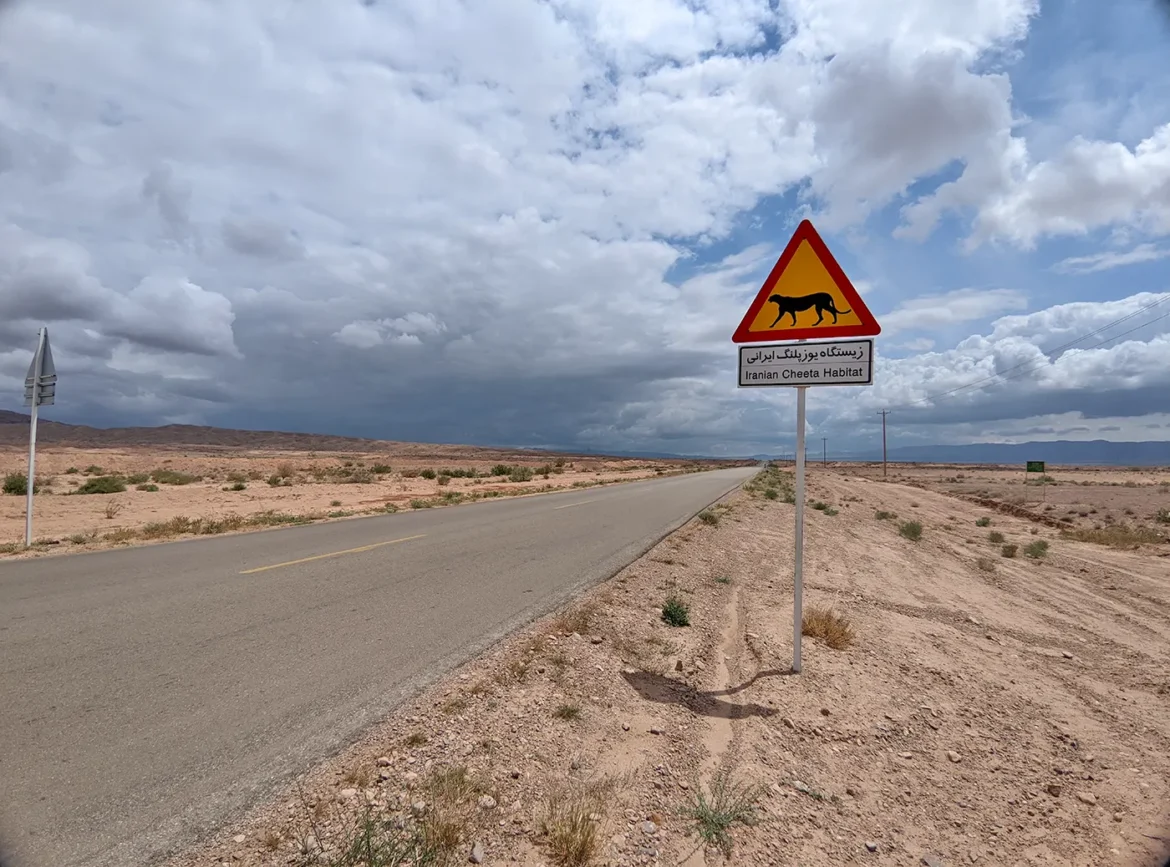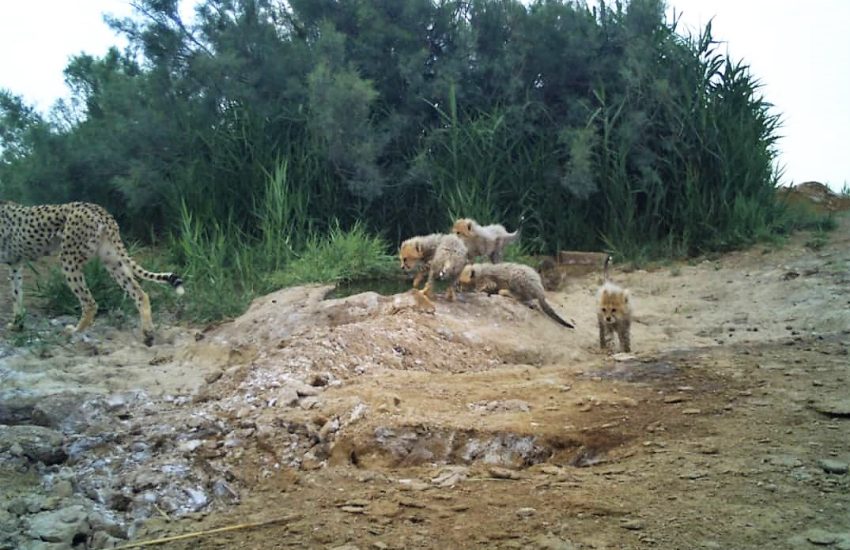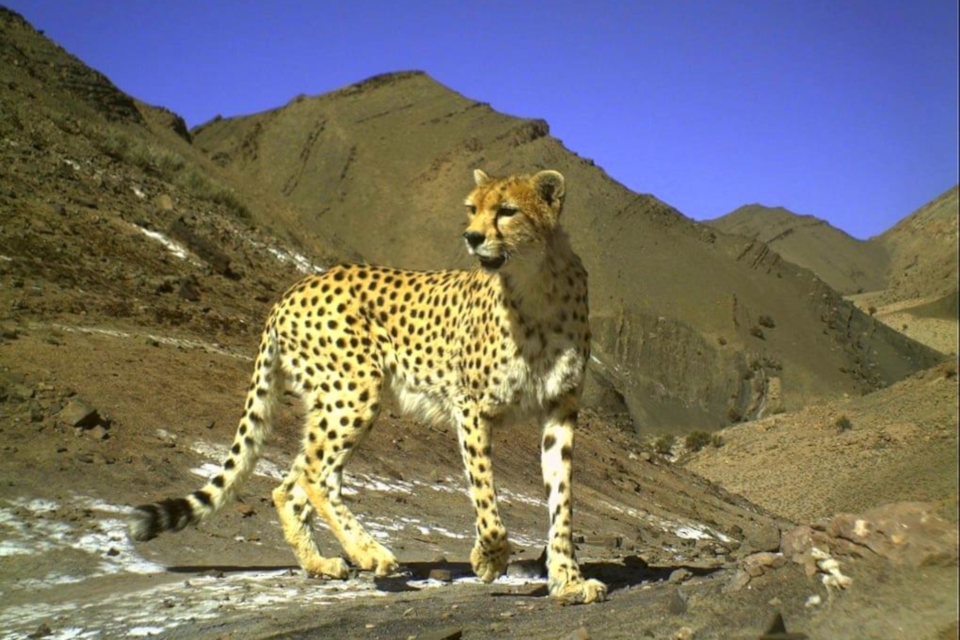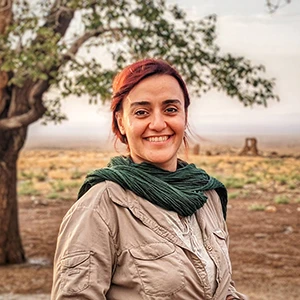I want to share with you a heartbreaking story of a cheetah family that I witnessed last week. A cheetah cub died in a road accident on a road that is known as “The Death Road” for cheetahs in Iran. This male cub and his brother along with their mother named “Helia” tried to cross the road and get to the northern habitats. We spent 7 nights by the road to prevent them from returning and finding their lost family member. In this video, I have sat in the middle of two road lanes and captured this video with my cellphone. You can see how close they were to the road. A group of more than 25 volunteers were ready to close the road in an emergency situation to prevent a new accident. We tried many ways to push them back from the road. However, the mother seems to have mourning for the lost cub for one week and didn’t want to get far away from the road.
The cub was one year old, and we expected them to separate from their mother soon to gain new territories for themselves. This is the third car accident for cheetahs on that road in recent 11 months. In August 2022 when we observed “Helia” with four cubs on the northern side of the road, she had four cubs. However, in late September 2022, our camera traps captured her with two cubs in the far south of the road. Sadly, just two of her cubs were captured by the camera. Now only one of four cubs survived during these 11 months.
As the Road Department in the government doesn’t will to allocate enough budget to improve safety on the road and make safe bypasses for cheetahs and other wildlife, we have arranged a group of individuals and organizations to crowdfund a small portion of the needed budget to safeguard accident hotspots. I hope people in Iran will join us in this campaign and help us save these magnificent animals from extinction.
You can watch the video in my Linkedin page:






